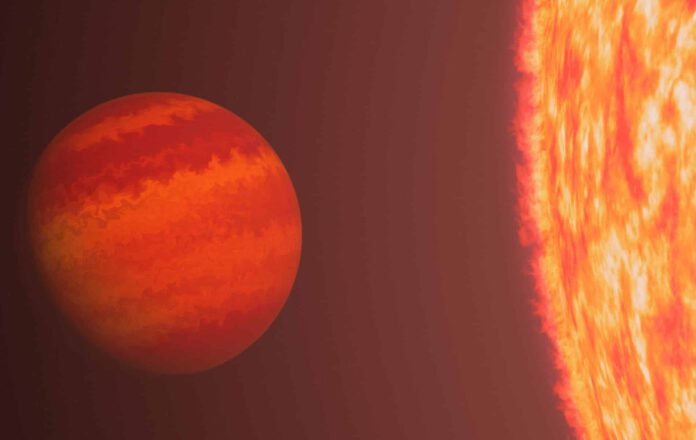
In fact, due to the intense radiation from its nearby host star, the planet should have been stripped down to bare rock. Yet, surprisingly, the planet has developed a ‘fluffy’ atmosphere.
Discovery Around a Red Giant Star
Astronomers have discovered a rather unique planet orbiting a tumultuous red giant star. This world is bombarded by the relentless radiation from its host star. Typically, planets in such extreme conditions are completely stripped of their atmospheres. However, this planet has somehow managed to defy that fate.
Phoenix
The newly discovered planet, officially named TIC365102760 b, is more colloquially known as ‘Phoenix.’ This planet, which is 6.2 times larger than Earth, completes an orbit around its star every 4.2 days and is located about six times closer to its star than Mercury is to our Sun. Given that its host star is a red giant, Phoenix is exposed to relentless intense radiation. Under normal circumstances, planets orbiting such fierce stars would be stripped bare, but Phoenix has somehow retained a ‘fluffy’ atmosphere.
Researchers are puzzled. Phoenix, theoretically, should not exist in its current state. “The evolution of this planet is occurring differently than expected,” says lead researcher Sam Grunblatt. “It appears to have a much larger, less dense atmosphere than what we typically expect for such a system. The big question is how this planet has managed to retain its atmosphere despite being so close to its host star.”
Hot Neptunus
This new planet falls into a rare category known as ‘hot Neptunes,’ named for their similarities to the outer, frozen giant of our solar system. Unlike that distant giant, hot Neptunes are situated much closer to their host stars and are significantly warmer. However, Phoenix is surprisingly smaller, older, and hotter than scientists had anticipated. “This is the smallest planet we have ever found orbiting a red giant star,” notes Grunblatt. “Furthermore, it likely has the lowest mass of any planets observed around red giants. It truly stands out. We don’t understand why it still has an atmosphere, while other hot Neptunes, which are much smaller and closer to their host stars, lose their atmospheres in less extreme conditions.”
Slower Atmospheric Stripping
The cause remains a mystery. Given Phoenix’s age and blistering temperatures, combined with its unexpectedly low density, the process of atmospheric stripping must be occurring at a slower pace than scientists thought possible, as described in their study. Moreover, they suspect that the planet is sixty times less dense than the previously recorded lowest-density hot Neptune. However, Phoenix’s life is likely not long-lasting. The planet is expected to spiral into its host star and perish within 100 million years.
The discovery of Phoenix forces scientists to reevaluate prevailing theories on how planets evolve and die in extreme environments. It also highlights the immense diversity of solar systems and the complexity of planetary evolution.
Earth’s Long-Term Evolution
Additionally, these findings help scientists better understand how atmospheres, like that of Earth, might evolve over time. In a few billion years, the Sun will also swell into a red giant, engulfing Earth and other inner planets. “Our understanding of the late evolution of planetary systems is still quite limited,” explains Grunblatt. “The results suggest that Earth’s atmosphere may not evolve as we expect.”
In follow-up research, Grunblatt and his team plan to continue searching for more small worlds like Phoenix. Using the planet-hunting TESS telescope, which excels at detecting low-density planets by observing their transit across their host stars, they have identified a dozen potential candidates. They then refine their data using the W.M. Keck Observatory on the Mauna Kea volcano in Hawaii. It is hoped that this approach will eventually provide more insights into the enigmatic evolution of distant planets, although we are not there yet. “We have a long way to go to fully understand how planetary atmospheres evolve over time,” concludes Grunblatt.











